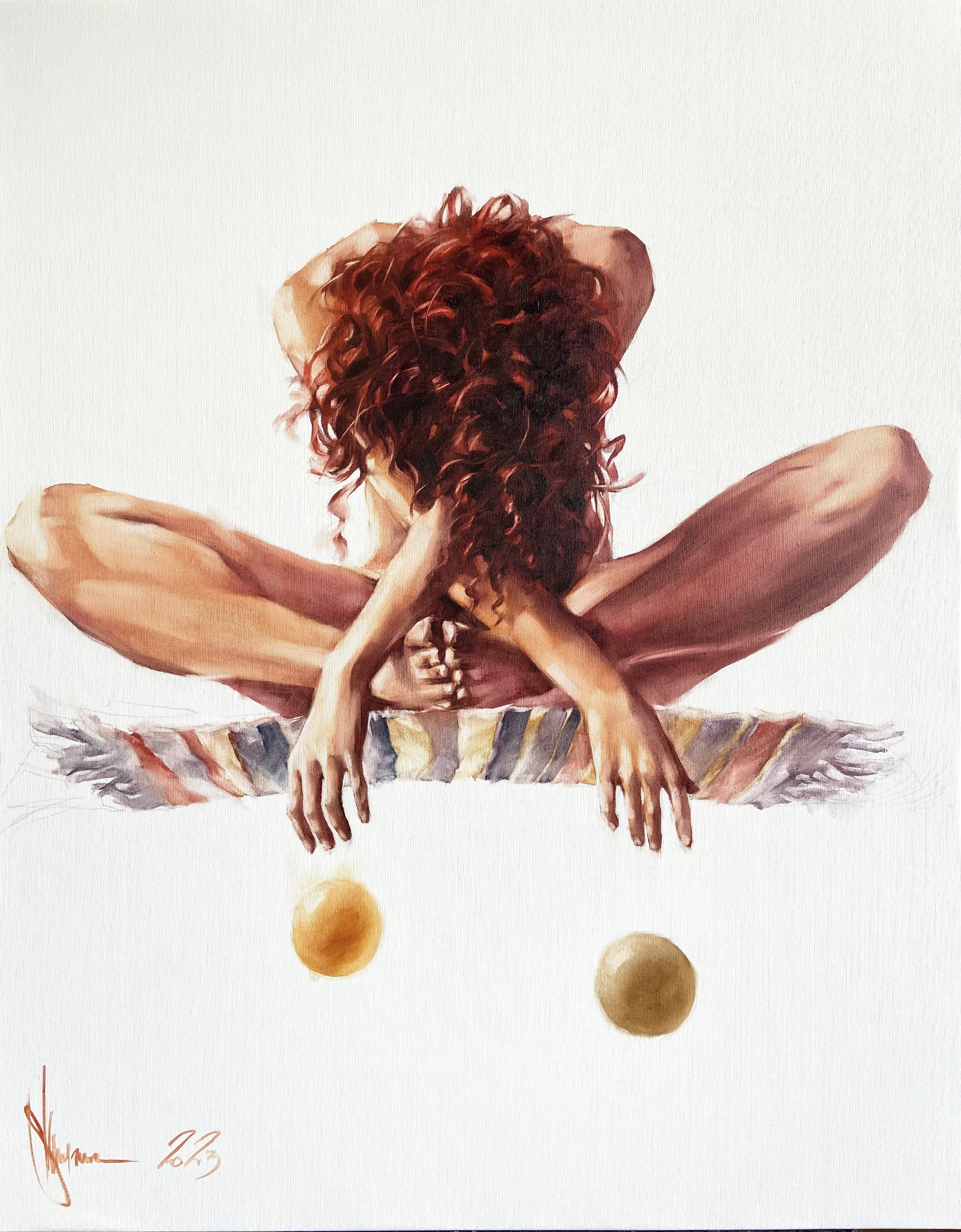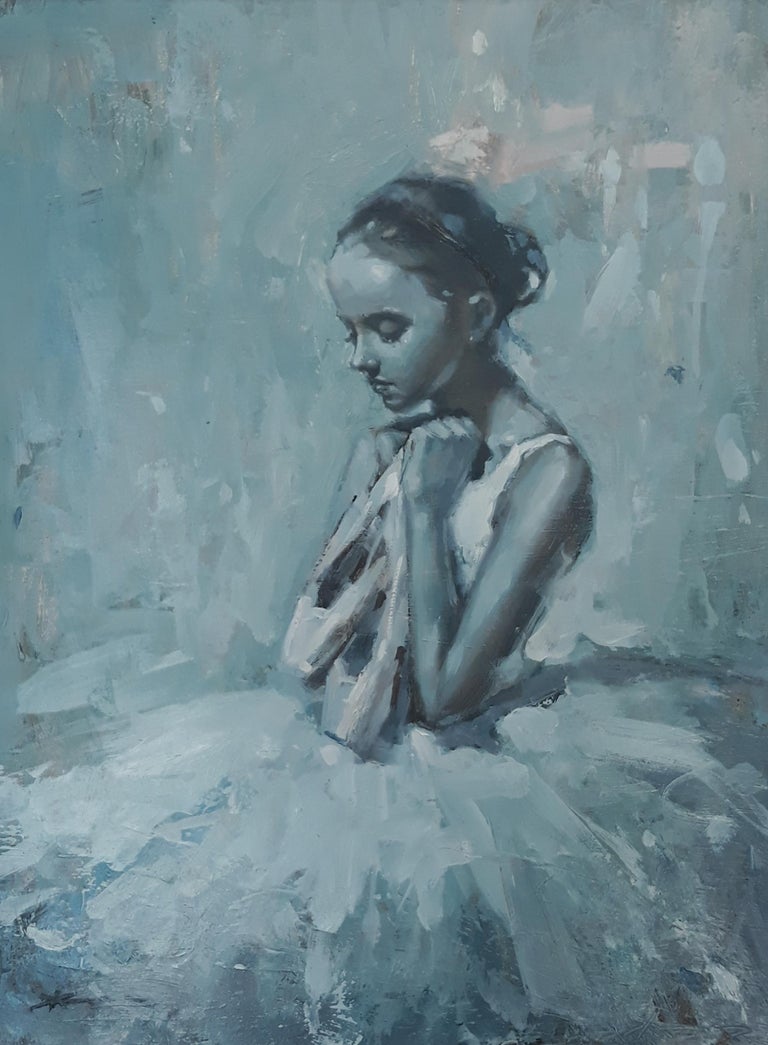The Role of Feeling and Expression in Metaphorical Oil Paint: A Comprehensive Evaluation of Topic and Structure
The interplay of emotion and expression in metaphorical oil paint offers as an essential lens whereby one can check out the detailed connection between topic and make-up. Artists harness different techniques, from shade choice to brushstroke dynamics, to cultivate emotional vibration within their jobs. This nuanced orchestration not only forms viewer assumption yet likewise invites a much deeper inquiry right into exactly how these elements integrate to reflect the intricacies of human experience. As we explore this abundant terrain, one must take into consideration exactly how specific instance studies brighten the wider implications of these creative choices.
Understanding Emotion in Art
Feeling in art acts as an effective conduit for expression, enabling artists to convey complicated sensations via their work. In figurative oil paint, this psychological depth is usually portrayed with the representation of the human figure, catching the subtleties of human experience. The choice of topic, shade scheme, and brushwork all add to the emotional vibration of an item.
Artists often bring into play personal experiences, social concerns, or global styles to stimulate feelings in the audience. As an example, a portrait may reflect vulnerability, while a vibrant figure in movement can represent flexibility or chaos. These emotional threads attach the customer to the art work, cultivating a discussion that goes beyond the aesthetic tool.
In addition, the interaction in between light and darkness can magnify psychological strength, assisting the customer's look and accentuating particular aspects within the composition. Using texture in oil painting further includes layers of complexity, inviting a responsive feedback that improves the emotional experience. In general, comprehending emotion in art is essential for appreciating the nuances that identify figurative oil painting, as it changes plain depiction into an extensive exploration of the human condition.
Trick Components of Make-up
In the realm of figurative oil paint, the structure acts as the underlying framework that arranges aesthetic components and enhances the psychological story. Important elements of structure include equilibrium, comparison, prime focus, and rhythm, each adding to the general effect of the art work.
Balance describes the circulation of aesthetic weight within the painting, which can be achieved via in proportion or asymmetrical arrangements. A healthy structure provides security, allowing the customer to engage with the item harmoniously - figurative oil painting. Comparison, on the other hand, entails juxtaposing various aspects, such as dark and light or warm and cool shades, to direct the visitor's eye and evoke emotional actions
The centerpiece is essential, as it routes interest to one of the most significant component of the paint, commonly highlighting the emotional core of the narrative. Via methods like shade saturation or positioning, artists can stress this area efficiently. Last but not least, rhythm concern the repetition of aspects, producing a feeling of motion and circulation throughout the composition. By skillfully integrating these crucial elements, artists can craft emotionally resonant and engaging metaphorical oil paints that captivate and engage their audience.
Subject and Its Effect
Topic plays an essential duty in metaphorical oil paint, as it not just offers as the structure for the story however likewise shapes the customer's interpretation and emotional engagement with the artwork. The option of topic-- be it a singular figure, a group dynamic, or a thematic depiction-- directly affects the psychological ambience conveyed to the target market.

For instance, pictures commonly evoke personal connections, disclosing the intricacies of human expression and personality, while scenes depicting common activities can develop a sense of belonging or nostalgia. The historical and cultural context of the subject issue enriches the customer's understanding, prompting deeper representations on societal norms, worths, and the human condition.
Different topics also produce differing levels of interaction; a significant dispute shown through figures in stress might elicit feelings of anxiousness or empathy, while peaceful landscapes can conjure up peace and consideration. Inevitably, the effect of subject in metaphorical oil paint is extensive, as it serves as a channel for psychological vibration, guiding the audience's action and analysis, and fostering a connection between the artwork and the onlooker. This interaction is important for the successful interaction of the musician's intent.
Strategies for Stimulating Sensations
The effectiveness of figurative oil paint in sharing feelings is significantly influenced by the techniques utilized by the artist. Among one of the most essential methods is making use of color theory, where the tactical selection of shades can evoke particular emotional reactions. Warm colors, such as reds and oranges, often elicit feelings of passion or aggressiveness, while cooler tones like blues and environment-friendlies often tend to stimulate peace or unhappiness.
Another important technique is the adjustment of light and darkness, called chiaroscuro. This technique enhances the three-dimensionality of figures, developing significant contrasts that can increase emotional depth. The positioning of light can assist customers' emotions, highlighting particular elements of the make-up.
Brushwork likewise plays a critical function; loose, expressive strokes can convey power and spontaneity, whereas smoother strategies could suggest tranquility or accuracy. Additionally, the arrangement of topics within the structure can influence psychological effect. Close closeness can suggest intimacy, while range may show isolation.
Inevitably, the combination of these strategies allows artists to craft stories that resonate use this link with the customer, transforming a plain visual experience right into an evocative psychological journey. - figurative oil painting

Study of Notable Works
Checking out noteworthy jobs of metaphorical oil painting reveals click here for more exactly how numerous techniques are utilized to evoke effective feelings. One exemplary case is Edvard Munch's "The Scream," where the altered number and swirling history convey existential dread. Munch's usage of shade-- deep blues and dazzling oranges-- escalates the emotional influence, showcasing just how palette options can form audience experience.
An additional significant work is Pablo Picasso's "Les Demoiselles d'Avignon." Here, fragmented types and bold brushstrokes reflect a tumultuous psychological landscape, testing traditional representations of the women figure. Picasso's innovative composition not only captures the viewer's focus however also invites reflection on motifs of identification and sexuality.
Furthermore, Frida Kahlo's "The Two Fridas" provides a poignant expedition of duality and self-identity. The different figures, linked by a common heart, exhibit Kahlo's emotional deepness and individual narrative. figurative oil painting. Her meticulous focus to information and symbolic aspects serve to involve customers on a visceral degree
These study underscore the extensive connection between emotion and composition in metaphorical oil painting, revealing just how artists harness strategy to interact complex sensations and narratives that reverberate throughout time and culture.

Final Thought
In conclusion, the interaction of emotion and expression in figurative oil paint considerably boosts the audience's experience and analysis of the artwork. With a mindful selection of topic and compositional techniques, musicians share profound stories that resonate on both individual and universal levels. The application of color concept, brushwork, and chiaroscuro additional amplifies emotional deepness, transforming each canvas right into a powerful representation of the complexities of the human experience.
In metaphorical oil paint, this emotional depth is usually portrayed with the depiction of the human figure, catching the subtleties of human experience.Moreover, the interplay between light and shadow can magnify psychological intensity, assisting the useful source visitor's stare and drawing focus to certain elements within the composition. The usage of texture in oil painting even more adds layers of complexity, inviting a tactile action that boosts the psychological experience.The focal factor is crucial, as it directs attention to the most significant component of the paint, usually highlighting the psychological core of the story. Inevitably, the influence of subject issue in metaphorical oil paint is profound, as it serves as a conduit for emotional resonance, guiding the viewer's response and analysis, and cultivating a link in between the artwork and the observer.